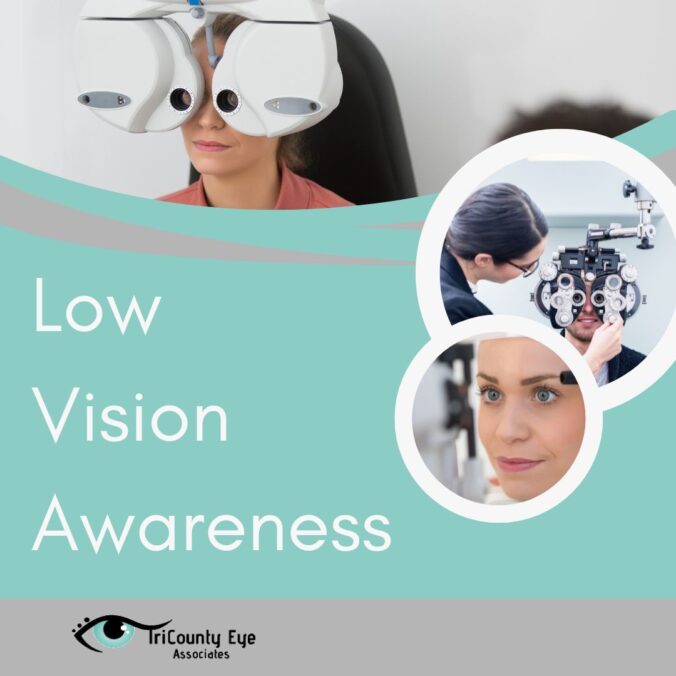February is low vision awareness month, so we thought this was the perfect time to shed some light on the topic. According to the National Eye Institute millions of people in the US are living with a visual impairment.
Having a visual impairment can make things like every day activities hard to do.
What is Low Vision?
Low vision is when someone has uncorrectable, reduced vision. It means that their vision cannot be improved by wearing glasses or contacts.
According to the American Optometric Association, the criteria for low vision is 20/200 or worse. Most of us know that 20/20 vision is what we are shooting for each year at our eye exam.
For reference, 20/500 to 20/1000 is considered profound low vision and less than 20/1000 is considered near total low vision.
In the United States, anyone who has vision that cannot be corrected better than 20/200 in their best eye or who has 20 degrees or less of their visual field remaining is considered legally blind. So to be legally blind does always mean you cannot see anything.
What Causes Low Vision?
While low vision affects so many people in the world, there are many different things that can cause it. Some of the main things that can cause low vision we have talked about on our blogs in the past. They include:
- Macular Degeneration – This affects the retina, causing blurred vision. If developed later in life can be caused by smoking and poor nutrition.
- Cataracts – This is clouding of the lens inside the eye. The clouding keeps light from being able to reach the back of the eye which is needed for sight.
- Glaucoma – This happens when there is increasing internal pressure in the eye because of issues with the flow or drainage of fluid within the eye. This pressure causes damage to the optic nerve.
- Diabetic Retinopathy – This can happen to people with diabetes. The diabetes can cause blood vessels to develop tiny branches that leak and keep all of the nourishment from getting to the Retina.
- Retinitis Pigmentosa – This is an inherited disease that causes vision impairment.
- Amblyopia – This is when the visual system does not develop normally during childhood resulting in blurry vision that is not easily corrected.
- Retinopathy of Prematurity – This affects newborns who are born prematurely and the high oxygen levels in incubators during the critical neonatal period can cause it.
- Retinal Detachment – This is when the retina separates from is underlying layer.
- Traumatic Brain Injury – any traumatic brain injury can affect the eye and result in long term vision impairment issues.
Common Types of Low vision
- Loss of central vision
- Blurred vision
- Reduced Contract Sensitivity
- Glare light sensitivity
- Loss of peripheral vision
- Night Blindness
Low Vision Rehabilitation
If you are suffering from low vision there are some things that eye doctors can do to help improve your quality of life. Some eye doctors specialize in low vision rehabilitation. This rehabilitation can help people with low vision get their independence back.
People with low vision can learn a variety of techniques to help them perform daily activites with their remaining vision. There are also government and private programs that offer educational counseling, occupational therapy and more.

